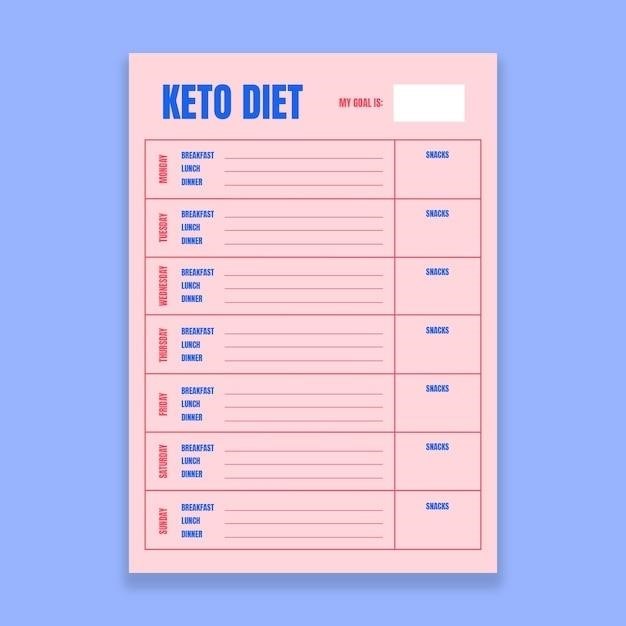This comprehensive guide explores the HMH US History textbook, a widely used resource in high school classrooms. We delve into its availability, content, key features, digital resources, and more, providing insights for both teachers and students.
The HMH US History textbook, published by Houghton Mifflin Harcourt, is a comprehensive resource designed to guide students through the complexities of American history. It covers a wide range of topics, from the early days of exploration and colonization to the present day, providing a balanced and engaging narrative. The textbook is known for its clear and concise writing style, making it accessible to students of varying reading levels. It also incorporates a variety of primary and secondary sources, helping students develop critical thinking skills and a deeper understanding of historical events.
The HMH US History textbook is available in both print and digital formats, providing flexibility for teachers and students; The digital version offers interactive features, such as multimedia content, timelines, and quizzes, enhancing the learning experience. The textbook is widely used in high school classrooms across the United States, and it is aligned with national and state curriculum standards.
This guide serves as a comprehensive resource for teachers, students, and parents seeking information about the HMH US History textbook. It covers key aspects of the textbook, including its availability, content, key features, digital resources, teacher and student editions, curriculum alignment, and reviews. By providing a thorough overview, this guide aims to assist users in understanding the value and potential of this valuable educational tool.
The HMH US History textbook, published by Houghton Mifflin Harcourt, is a comprehensive resource designed to guide students through the complexities of American history. It covers a wide range of topics, from the early days of exploration and colonization to the present day, providing a balanced and engaging narrative. The textbook is known for its clear and concise writing style, making it accessible to students of varying reading levels. It also incorporates a variety of primary and secondary sources, helping students develop critical thinking skills and a deeper understanding of historical events.
The HMH US History textbook is available in both print and digital formats, providing flexibility for teachers and students. The digital version offers interactive features, such as multimedia content, timelines, and quizzes, enhancing the learning experience. The textbook is widely used in high school classrooms across the United States, and it is aligned with national and state curriculum standards.
This guide serves as a comprehensive resource for teachers, students, and parents seeking information about the HMH US History textbook. It covers key aspects of the textbook, including its availability, content, key features, digital resources, teacher and student editions, curriculum alignment, and reviews. By providing a thorough overview, this guide aims to assist users in understanding the value and potential of this valuable educational tool.
The HMH US History textbook is available in a variety of formats to suit different learning preferences and classroom needs. The print version is a traditional textbook format, providing a physical copy for students to read, annotate, and interact with. The digital version, accessible through the HMH website or app, offers an interactive learning experience with multimedia content, quizzes, and other engaging features. The digital format allows for easy navigation, highlighting, and note-taking, making it a convenient option for students who prefer digital learning.
The textbook is typically available for purchase through educational retailers and directly from Houghton Mifflin Harcourt. Teachers and schools may also have access to the textbook through subscription services or school-wide licenses. The availability of the textbook may vary depending on the specific edition and format, so it’s recommended to check with your school or educational provider for details.
The HMH US History textbook, published by Houghton Mifflin Harcourt, is a comprehensive resource designed to guide students through the complexities of American history. It covers a wide range of topics, from the early days of exploration and colonization to the present day, providing a balanced and engaging narrative. The textbook is known for its clear and concise writing style, making it accessible to students of varying reading levels. It also incorporates a variety of primary and secondary sources, helping students develop critical thinking skills and a deeper understanding of historical events.
The HMH US History textbook is available in both print and digital formats, providing flexibility for teachers and students. The digital version offers interactive features, such as multimedia content, timelines, and quizzes, enhancing the learning experience. The textbook is widely used in high school classrooms across the United States, and it is aligned with national and state curriculum standards.
This guide serves as a comprehensive resource for teachers, students, and parents seeking information about the HMH US History textbook. It covers key aspects of the textbook, including its availability, content, key features, digital resources, teacher and student editions, curriculum alignment, and reviews. By providing a thorough overview, this guide aims to assist users in understanding the value and potential of this valuable educational tool.
The HMH US History textbook is available in a variety of formats to suit different learning preferences and classroom needs. The print version is a traditional textbook format, providing a physical copy for students to read, annotate, and interact with. The digital version, accessible through the HMH website or app, offers an interactive learning experience with multimedia content, quizzes, and other engaging features. The digital format allows for easy navigation, highlighting, and note-taking, making it a convenient option for students who prefer digital learning.
The textbook is typically available for purchase through educational retailers and directly from Houghton Mifflin Harcourt. Teachers and schools may also have access to the textbook through subscription services or school-wide licenses. The availability of the textbook may vary depending on the specific edition and format, so it’s recommended to check with your school or educational provider for details.
The HMH US History textbook is designed to provide a comprehensive overview of American history, covering major events, movements, and figures from the colonial era to the present. It explores a wide range of themes, including political, social, economic, and cultural developments, providing students with a well-rounded understanding of the nation’s past. The textbook is organized chronologically, with chapters dedicated to specific periods or events, ensuring a logical progression of historical understanding. Each chapter includes a variety of features, such as primary source documents, maps, timelines, and photographs, enhancing the learning experience and providing visual aids to support comprehension.
The HMH US History textbook also includes a variety of activities and assessments to reinforce learning and promote critical thinking. These activities may include discussion questions, writing prompts, research projects, and online quizzes. The textbook aims to engage students with the material and provide them with the necessary tools to succeed in their US History studies. It is a valuable resource for students seeking to gain a deep understanding of American history and its enduring impact on the world today.
The HMH US History textbook, published by Houghton Mifflin Harcourt, is a comprehensive resource designed to guide students through the complexities of American history. It covers a wide range of topics, from the early days of exploration and colonization to the present day, providing a balanced and engaging narrative. The textbook is known for its clear and concise writing style, making it accessible to students of varying reading levels. It also incorporates a variety of primary and secondary sources, helping students develop critical thinking skills and a deeper understanding of historical events.
The HMH US History textbook is available in both print and digital formats, providing flexibility for teachers and students. The digital version offers interactive features, such as multimedia content, timelines, and quizzes, enhancing the learning experience. The textbook is widely used in high school classrooms across the United States, and it is aligned with national and state curriculum standards.
This guide serves as a comprehensive resource for teachers, students, and parents seeking information about the HMH US History textbook. It covers key aspects of the textbook, including its availability, content, key features, digital resources, teacher and student editions, curriculum alignment, and reviews. By providing a thorough overview, this guide aims to assist users in understanding the value and potential of this valuable educational tool.
The HMH US History textbook is available in a variety of formats to suit different learning preferences and classroom needs. The print version is a traditional textbook format, providing a physical copy for students to read, annotate, and interact with. The digital version, accessible through the HMH website or app, offers an interactive learning experience with multimedia content, quizzes, and other engaging features. The digital format allows for easy navigation, highlighting, and note-taking, making it a convenient option for students who prefer digital learning.
The textbook is typically available for purchase through educational retailers and directly from Houghton Mifflin Harcourt. Teachers and schools may also have access to the textbook through subscription services or school-wide licenses. The availability of the textbook may vary depending on the specific edition and format, so it’s recommended to check with your school or educational provider for details.
The HMH US History textbook is designed to provide a comprehensive overview of American history, covering major events, movements, and figures from the colonial era to the present. It explores a wide range of themes, including political, social, economic, and cultural developments, providing students with a well-rounded understanding of the nation’s past. The textbook is organized chronologically, with chapters dedicated to specific periods or events, ensuring a logical progression of historical understanding. Each chapter includes a variety of features, such as primary source documents, maps, timelines, and photographs, enhancing the learning experience and providing visual aids to support comprehension.
The HMH US History textbook also includes a variety of activities and assessments to reinforce learning and promote critical thinking. These activities may include discussion questions, writing prompts, research projects, and online quizzes. The textbook aims to engage students with the material and provide them with the necessary tools to succeed in their US History studies. It is a valuable resource for students seeking to gain a deep understanding of American history and its enduring impact on the world today.
The HMH US History textbook boasts several key features that enhance its effectiveness as a learning tool. These features are designed to engage students, promote critical thinking, and provide a comprehensive understanding of American history. The textbook’s engaging narrative style helps to bring the past to life, making it relevant and relatable to students. It incorporates a variety of primary sources, such as letters, diaries, speeches, and photographs, allowing students to experience history firsthand and develop their analytical skills.
The textbook also includes a variety of multimedia elements, such as videos, audio recordings, and interactive maps, further enhancing the learning experience and catering to diverse learning styles. The inclusion of timelines and charts provides a clear visual representation of historical events and their chronology, aiding in comprehension and retention. The HMH US History textbook also offers opportunities for students to apply their knowledge through activities, projects, and assessments, encouraging active learning and critical thinking. These features combine to make the HMH US History textbook a valuable resource for students, teachers, and anyone interested in exploring the rich tapestry of American history.

HMH US History Textbook⁚ A Comprehensive Guide
Introduction
The HMH US History textbook, published by Houghton Mifflin Harcourt, is a comprehensive resource designed to guide students through the complexities of American history. It covers a wide range of topics, from the early days of exploration and colonization to the present day, providing a balanced and engaging narrative. The textbook is known for its clear and concise writing style, making it accessible to students of varying reading levels. It also incorporates a variety of primary and secondary sources, helping students develop critical thinking skills and a deeper understanding of historical events.
The HMH US History textbook is available in both print and digital formats, providing flexibility for teachers and students. The digital version offers interactive features, such as multimedia content, timelines, and quizzes, enhancing the learning experience. The textbook is widely used in high school classrooms across the United States, and it is aligned with national and state curriculum standards.
This guide serves as a comprehensive resource for teachers, students, and parents seeking information about the HMH US History textbook. It covers key aspects of the textbook, including its availability, content, key features, digital resources, teacher and student editions, curriculum alignment, and reviews. By providing a thorough overview, this guide aims to assist users in understanding the value and potential of this valuable educational tool.
Availability and Formats
The HMH US History textbook is available in a variety of formats to suit different learning preferences and classroom needs. The print version is a traditional textbook format, providing a physical copy for students to read, annotate, and interact with. The digital version, accessible through the HMH website or app, offers an interactive learning experience with multimedia content, quizzes, and other engaging features. The digital format allows for easy navigation, highlighting, and note-taking, making it a convenient option for students who prefer digital learning.
The textbook is typically available for purchase through educational retailers and directly from Houghton Mifflin Harcourt. Teachers and schools may also have access to the textbook through subscription services or school-wide licenses. The availability of the textbook may vary depending on the specific edition and format, so it’s recommended to check with your school or educational provider for details.
Content and Scope
The HMH US History textbook is designed to provide a comprehensive overview of American history, covering major events, movements, and figures from the colonial era to the present. It explores a wide range of themes, including political, social, economic, and cultural developments, providing students with a well-rounded understanding of the nation’s past. The textbook is organized chronologically, with chapters dedicated to specific periods or events, ensuring a logical progression of historical understanding. Each chapter includes a variety of features, such as primary source documents, maps, timelines, and photographs, enhancing the learning experience and providing visual aids to support comprehension.
The HMH US History textbook also includes a variety of activities and assessments to reinforce learning and promote critical thinking. These activities may include discussion questions, writing prompts, research projects, and online quizzes. The textbook aims to engage students with the material and provide them with the necessary tools to succeed in their US History studies. It is a valuable resource for students seeking to gain a deep understanding of American history and its enduring impact on the world today.
Key Features
The HMH US History textbook boasts several key features that enhance its effectiveness as a learning tool. These features are designed to engage students, promote critical thinking, and provide a comprehensive understanding of American history. The textbook’s engaging narrative style helps to bring the past to life, making it relevant and relatable to students. It incorporates a variety of primary sources, such as letters, diaries, speeches, and photographs, allowing students to experience history firsthand and develop their analytical skills.
The textbook also includes a variety of multimedia elements, such as videos, audio recordings, and interactive maps, further enhancing the learning experience and catering to diverse learning styles. The inclusion of timelines and charts provides a clear visual representation of historical events and their chronology, aiding in comprehension and retention. The HMH US History textbook also offers opportunities for students to apply their knowledge through activities, projects, and assessments, encouraging active learning and critical thinking. These features combine to make the HMH US History textbook a valuable resource for students, teachers, and anyone interested in exploring the rich tapestry of American history.
Digital Resources
The HMH US History textbook offers a wealth of digital resources that complement the print version and enhance the learning experience. These resources provide interactive content, multimedia elements, and assessments, making the study of American history more engaging and accessible. The digital resources are typically accessed through the HMH website or app, and they are often integrated with the textbook’s chapters. Students can access interactive timelines, maps, and primary source documents, allowing them to explore historical events in greater depth and from multiple perspectives.
The digital resources also include multimedia content, such as videos, audio recordings, and animations, which can bring historical events to life and provide a more immersive learning experience. The textbook’s digital platform often includes self-assessment quizzes and activities, allowing students to test their knowledge and identify areas for further study. These digital resources provide a valuable supplement to the print textbook, offering students a more dynamic and engaging way to learn about American history. They cater to diverse learning styles and provide a more interactive and accessible learning experience.









